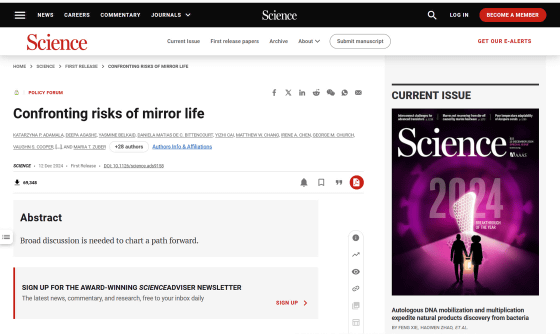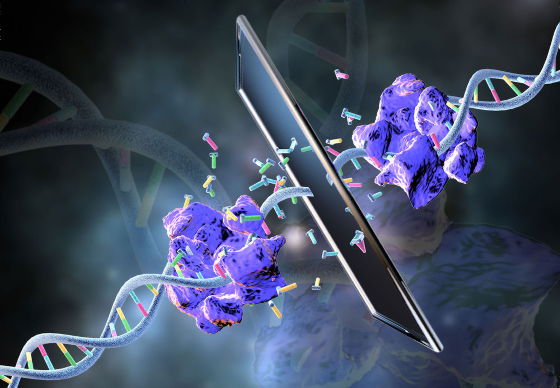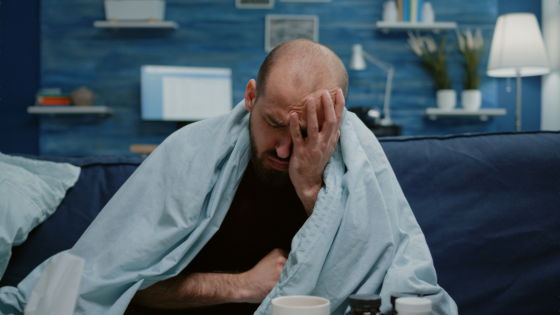Dozens of scientists warn that research into 'mirror lifeforms' made from mirror images of molecular structures poses serious risks

In recent years, the field of synthetic biology has made remarkable progress, with
Confronting risks of mirror life | Science
https://www.science.org/doi/10.1126/science.ads9158

Technical Report on Mirror Bacteria: Feasibility and Risks | Stanford Digital Repository
https://purl.stanford.edu/cv716pj4036
Mirror Bacteria Research Poses Significant Risks, Dozens of Scientists Warn | The Scientist Magazine®
https://www.the-scientist.com/mirror-bacteria-research-poses-significant-risks-dozens-of-scientists-warn-72419
Scientists Urge Ban on 'Mirror Life' Before It Endangers Global Health : ScienceAlert
https://www.sciencealert.com/scientists-urge-ban-on-mirror-life-before-it-endangers-global-health
Cells are the fundamental building blocks of life, and using synthetic molecules to replicate cellular functions, or combining natural and artificial molecules to create synthetic cells, could lead to major breakthroughs in biological research and drug development.
In nature, many molecules that are asymmetric exist only in one enantiomer, and the opposite enantiomer does not exist. For example, amino acids, which are the building blocks of proteins, come in two types, left-handed (L-type) and right-handed (D-type), but in nature most of the amino acids that make up life are biased toward the L-type. This bias is called homochirality , and although it is unclear why it occurs, chemical reactions in the biosphere are determined by this homochirality.
In recent years, researchers have attempted to synthesize mirror cells, which are identical to existing cells but are mirror images of existing amino acids and nucleotides that make up DNA. Because mirror cells do not interact with most normal molecules and cells, they may be useful for studying much less polluted organisms and for developing drugs that cannot be broken down by human body processes.
In 2016, a research team from Tsinghua University succeeded in creating a mirror image of an enzyme called DNA polymerase, which is involved in DNA replication and transcription into RNA, and confirmed that it was possible to create a mirror-image DNA strand.

by Zixuan Li, Xin Tao, Ting F. Zhu
Professor
In general, artificial lifeforms and genetically modified organisms can only survive in special environments, and it is difficult for them to survive and reproduce in the natural environment. Although several hundred incidents of artificial lifeforms possibly leaking out of laboratories are reported each year, none of them have led to an outbreak because they are too fragile to survive in the outside world.
However, interactions between organisms and cells depend on the ability to sense and respond to molecules. The mirror bacteria's enantiomeric molecules are not compatible with natural biological reactions, so they are not preyed upon by bacteriophages or other organisms. Therefore, even if the mirror bacteria were to be released into the wild, there would be no natural enemies and they could continue to proliferate.
Professor Glass and his colleagues point out that if humans become infected with the mirror bacteria, their immune system may not be able to kill the bacteria, leading to immunodeficiency and a condition similar to septic shock .

Professor Glass and his team acknowledged that it is problematic for science to be restricted for political reasons or misunderstandings, but pointed out that research involving deadly viruses, dangerous human experiments, and open-air nuclear explosions are restricted because they are too dangerous, and argued that research into creating 'mirror organisms,' including mirror bacteria, falls into the same high-risk category.
Related Posts:







